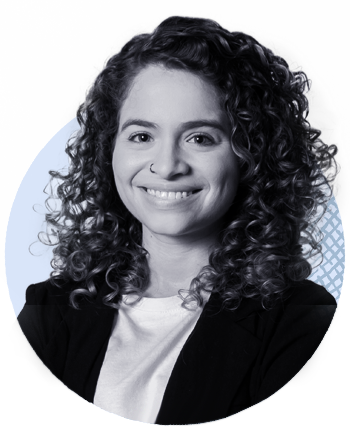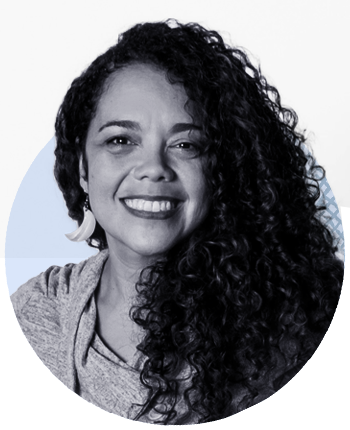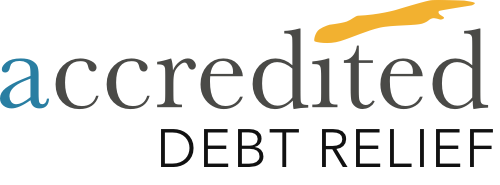How to Pay Off Credit Card Debt
If you’re wondering how to pay off your credit card debt, you're not alone. The New York Federal Reserve Bank's Center for Microeconomic Data reported that credit card balances increased by $45 billion, from $986 billion in Q1 2023 to a high of $1.03 trillion in Q2 2023.
This article will explore some of the best tactics you can use to pay off your credit card debt so you can get back on the road to financial freedom.
Strategies for paying off credit card debt
You want to get out of debt, but where and how do you start? The truth is, there's no one-size-fits-all solution to paying off credit card debt. Fortunately, there are a few strategies that can help you tackle your financial situation and get back on track. These are some of the steps you should consider:
- The debt snowball method
- The debt avalanche method
- Pay more than the minimum payment
- Negotiate with your credit card company
- Consider debt consolidation
- Adjust your spending habits
- Look into credit counseling services
The debt snowball method
Popularized by personal finance expert Dave Ramsey, the debt snowball method focuses on first paying off your smallest debt. You’ll still make minimum payments on all your debts, but allocate as much as possible to the bill with the smallest balance. Once that account is paid off, you take the amount you were paying toward it, direct it to the next smallest balance and so on.
This payment strategy can be beneficial for people with multiple small debts. As you pay off smaller accounts, you free up more money to put toward larger debts. This can also help motivate those struggling to stick to a debt reduction plan.
According to some behavioral economists, eliminating small debts early on in the process helps some people stay motivated by providing a sense of progress and relief. However, this method may not be the most cost-effective for some people since larger balances with high-interest debt can grow exponentially while you focus on the smallest balance on your list.
The debt avalanche method
Also known as debt stacking, the debt avalanche method focuses on paying off debts with the highest interest rates first. By prioritizing your debts based on their interest rates, you can reduce the interest fees accrued over time and save money in the long run. Say, for instance, you want to pay off a credit card and an auto loan with the following balances and interest rates:
| Balance | APR | Monthly Minimum | |
| Credit Card | $8,000 | 20.92% | $160 |
| Auto Loan | $15,000 | 4.07% | $644 |
With the debt avalanche method, you would first take on the credit card by making more than the minimum payment on it, while only paying the minimum on your auto loan. Once you’ve paid off your credit card, you can add the money you used to pay toward it to the auto loan’s minimum monthly payment and settle that debt much quicker.
Once you’re done with the credit card, you can add the money you used to pay it off to the auto loan’s minimum monthly payment and settle that debt much quicker.
Check out our guide on the debt snowball and the debt avalanche methods for more information.
Pay more than the minimum
Making minimum payments helps you avoid late fees and penalty rates. However, if you have extra funds available, it's wise to pay more than the minimum amount due.
Credit card interest is compounded daily, and the fees you accrue are based on your account's daily balance. That means that interest charges accrue each day your account has a due balance. If you only make the minimum monthly payment, the funds will go toward paying interest and won't significantly reduce the principal.
Credit card statements often include a "minimum payment warning" with a table showing how long it would take to pay off your balance if you only make minimum payments and how much more you'd pay due to interest. This should give you an idea of how long it will take to pay off your balance — and how much more you’d pay in interest — if you only make minimum payments.
Negotiate with your credit card company
Credit cards are convenient, but their high interest rates can turn a small monthly balance into considerable debt that can take years to pay down. If you're trying to pay off credit card debt fast, negotiating lower interest rates with your credit card issuers is one of the best ways to do so.
Note that you’ll have a better chance of getting a lower interest rate if you’re a long-time customer with a good credit score and a history of paying your bills on time. When you call to negotiate your credit card debt, mention how long you’ve been a customer and your history of timely payments. You may be surprised how often these companies are willing to lower their interest rates to keep you as a customer.
Negotiating better interest rates can help you save money in the long run, and you can use the money you save to make larger payments toward other accounts and settle your debt faster.
Consider debt consolidation
Debt consolidation involves combining multiple debts into a single one by taking out a debt consolidation or personal loan with lower interest rates than your credit cards. Debt consolidation can be a good strategy if you have high-interest debt, such as multiple high-interest credit cards. You'll also only have to make one payment each month instead of juggling multiple credit card balances and due dates to keep track of.
Here are two way in which you can consolidate debt:
Debt consolidation loan
A debt consolidation loan is a type of personal loan you can use to pay off other debts, such as credit cards, medical bills and other personal loans.
When you get a debt consolidation loan, the lender usually deposits the loan amount (minus fees) into your bank account. You can then use the funds to pay off your creditors. Some lenders, on the other hand, might pay the creditors directly. Once you settle your credit card accounts, you'll only have to pay the debt consolidation loan, which will have a set monthly payment and fixed interest rates.
Note that multiple lenders advertise debt consolidation loans as a different financial product than personal loans. However, both loans are essentially the same, offering fixed interest rates and a set monthly payment. That being said, it’s a good idea to compare rates for both debt consolidation and traditional personal loans, as one might be lower than the other.
Keep in mind that debt consolidation loans have the same credit requirements as other types of loans, so borrowers with bad credit scores might not qualify for the best debt consolidation loans.
Balance transfer credit cards
If you have a good or excellent credit score, you might be eligible for a balance transfer card that can help you pay down your outstanding balance sooner.
Balance transfer credit cards allow you to transfer the balance from one or more credit cards to a new one with an introductory 0% APR, which usually lasts between 12 to 21 months. This introductory period gives you a chance to pay down your debt without accumulating interest charges. Since you’re not paying interest, your entire monthly payment goes straight towards paying down the principal.
Try to pay down your balance before the promotional period ends, however, since once the regular APR starts, you’ll have to start paying interest again.
Also, know that many balance transfer cards charge a balance transfer fee of at least 3% of the balance you’re transferring — an amount that can add up if you have a large amount of debt.
For more information, check out our best balance transfer cards list.
Adjust your spending habits
One of the best ways to pay off debt quickly is to allocate extra cash to paying it down every month. This means finding new ways to save by setting a budget, tracking your spending and reducing unnecessary expenses.
To know how much money you can apply toward your credit card payments, you must first identify where your money is going. Take the time to write down your monthly expenses as it can be a great way to identify areas where you can cut back.
You might also consider closing a credit card if you realize you have too many to keep track of, as this could be an additional source of unnecessary spending. However, note that closing a card reduces your overall available credit, which in turn increases your credit utilization ratio and can lower your credit score.
Look into credit counseling services
If you’ve already tried the tactics mentioned on this list and are still struggling to get your credit card debt under control, it might be time to call in the pros. Non-profit credit counseling services can examine your financial situation and help you create a repayment or debt management plan.
Nonprofit credit counseling services can look at your particular financial situation and help you create a repayment or debt management plan.
Debt management plan
A debt management plan (DMP) is a repayment strategy in which a credit counseling agency can help you reduce your credit card interest rates and monthly payments. These agencies will work with your creditors to negotiate better loan terms, and once the DMP is set, you’ll make one single monthly payment to the credit counseling agency and it will distribute it among your creditors.
A DMP can help you avoid late payment fees and collection calls. Additionally, the repayment plan will most likely include ways to prevent additional damage to your credit by outlining ways to remove negative items from your credit report and ways to improve your credit score, if needed.
How much credit card debt is too much?
There’s no definitive answer to this question. One sign is that you’re having difficulty making minimum debt payments, or perhaps you’ve started using one credit card to pay off another.
Here are a few more indications that you have too much credit card debt:
- Your credit utilization ratio is above 30%: This ratio compares the amount of credit you use to the total amount of credit available. Ideally, your utilization ratio should be 30% or less.
- Your debt-to-income ratio exceeds 36%: This ratio compares your monthly average debt, including your credit cards, to your monthly gross income. Ideally, you want to keep your DTI ratio below 36%.
How to pay off credit card debt FAQs
Should I pay off my credit card or leave a small balance?
Should you close your credit card after paying off debt?
Summary of How to Pay Off Credit Card Debt
There isn't a one-size-fits-all way to become debt-free. However, if that’s your goal, several strategies for paying off credit card debt can help you get there faster.
Start by setting reasonable, achievable budgeting goals and paying more than the minimum on your cards to avoid accruing excessive interest charges.
You can also consider a debt consolidation loan, a personal loan or a balance transfer credit card. Just be sure to evaluate the terms of new cards or loans carefully to determine if they offer lower rates than what you’re already paying.
If you're struggling to manage debt independently, you can contact a nonprofit credit counseling agency. Professional counselors often offer free educational resources and can help you craft a debt repayment strategy. They may also recommend you sign up for a debt management plan, during which your counselor negotiates with creditors to reduce interest rates, waive late fees and establish more manageable monthly payments.


